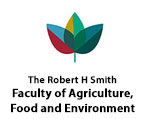A little less than eight hundred million tons of wheat are harvested in the world annually, but soon it won't be enough to feed us all. The combination of population explosion and the climate crisis poses a fundamental challenge to science: how to feed everyone? One important avenue is to adapt crops to changing climate with the help of genetic intervention to improve crops, both in quantity and quality.
How do you improve wheat? We talked about this with Prof. Zvi Peleg, from the Institute of Plant Sciences and Genetics. In his laboratory, he uses advanced genetic methods to locate and characterize genes and metabolic pathways related to the plant's ability to adapt to environmental stress.
Peleg focuses on the mother of wheat, the ancient wild wheat that grew in the northern region of Israel and from which, about ten thousand years ago, the wheat that the world still eats was cultivated. The domestication of wheat has a place of honor in the rapid growth and development of the human population, but in the process it lost some important properties. The mother of the wheat was discovered in 1906 near Rosh Pina by the agronomist Aharon Aharonson, the father of science in Israel and head of the Nili underground. Aharonson believed that the mother of the wheat had properties that gave it resistance to mold and disease.
One hundred years after Aharonson, in 2008, Prof. Zvi Peleg mapped the genetics of the mother of wheat and is trying to realize Aharonson's vision and continue in his path. It turns out that Aaronson was right. Prof. Peleg found genes in the mother of wheat that may help with tasks like drought resistance. For example, a gene which, in response to a stress, lengthens the roots of wheat to a depth of 2 meters, allowing it to reach water. Reincorporating this gene into modern wheat gave a significant increase in yield.


